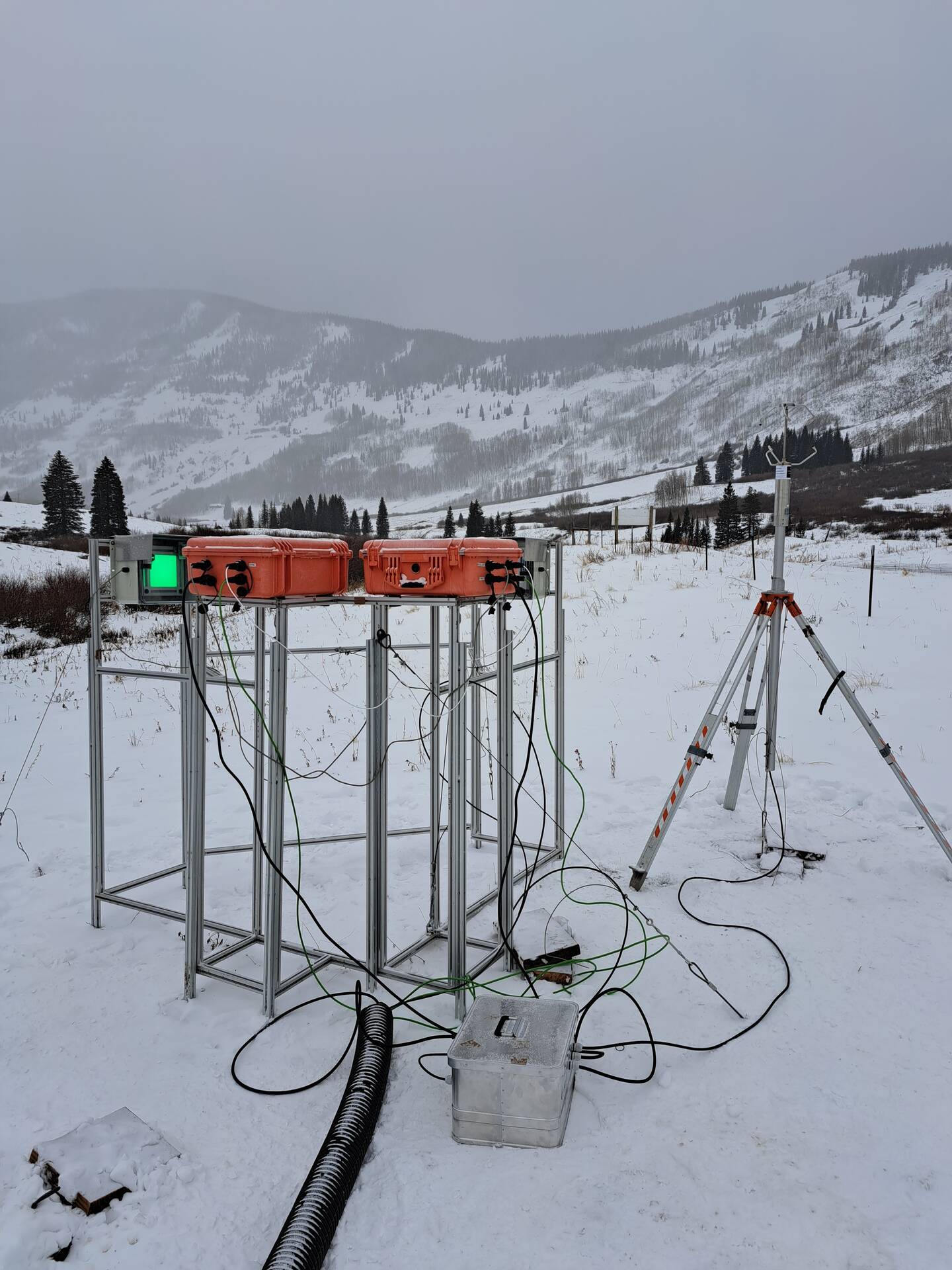German Team Seeks to Unravel Secrets of Snow Formation in Colorado
Published: 18 January 2024
Researchers from Leipzig University are analyzing snowfall data collected alongside ARM’s SAIL field campaign
The following is based on a translated article by Leipzig University.

Researchers from Leipzig University in Germany traveled all the way to central Colorado to participate in an important measurement campaign aimed at better understanding snowfall formation. From the data, they plan to study the processes of riming, in which small droplets of water freeze on ice crystals and increase the mass of snow, and secondary ice production (SIP), which is triggered when ice crystal fragments break off during riming and form new snow particles.
For seven months, Characterization of Orography-Influenced Riming (CORSIPP) operated as a complementary campaign alongside the U.S. Department of Energy Atmospheric Radiation Measurement (ARM) user facility’s Surface Atmosphere Integrated Field Laboratory (SAIL) field campaign. From September 2021 to June 2023, SAIL collected measurements in Colorado’s East River Watershed to help scientists better understand the atmospheric processes and land-atmosphere interactions that affect mountainous water cycles.
“The best way to understand complex snowfall processes is with a large amount of data. The Rocky Mountains receive many times more snow than Germany. Ten meters of snow fell on Gothic last winter.”
CORSIPP Co-Principal Investigator Heike Kalesse-Los
Instrumentation deployed to the area around Gothic, Colorado, as part of CORSIPP included a scanning W-band cloud radar and two in situ snowfall sensor video cameras. These instruments collected data that will assist researchers in identifying riming and SIP events and quantifying their impact on snowfall rates.
“The best way to understand complex snowfall processes is with a large amount of data,” says Leipzig junior professor Heike Kalesse-Los, who co-led the CORSIPP campaign with Leipzig research assistant Maximilian Maahn. “The Rocky Mountains receive many times more snow than Germany. Ten meters of snow fell on Gothic last winter.”
Measurements from ARM radiosonde launches during SAIL also proved helpful to the CORSIPP team. ARM technicians attached radiosondes to weather balloons for twice-daily ascents. The launches allowed the researchers to measure air temperature, humidity, pressure, and wind speed at differing altitudes to create a high-resolution weather profile with data obtained directly from the atmosphere.
In addition to Maahn and Kalesse-Los, the CORSIPP research team from Leipzig’s Institute for Meteorology included postdoctoral researcher Veronika Ettrichrätz and doctoral researcher Anton Kötsche.
Keep up with the Atmospheric Observer
Updates on ARM news, events, and opportunities delivered to your inbox
ARM User Profile
ARM welcomes users from all institutions and nations. A free ARM user account is needed to access ARM data.


















